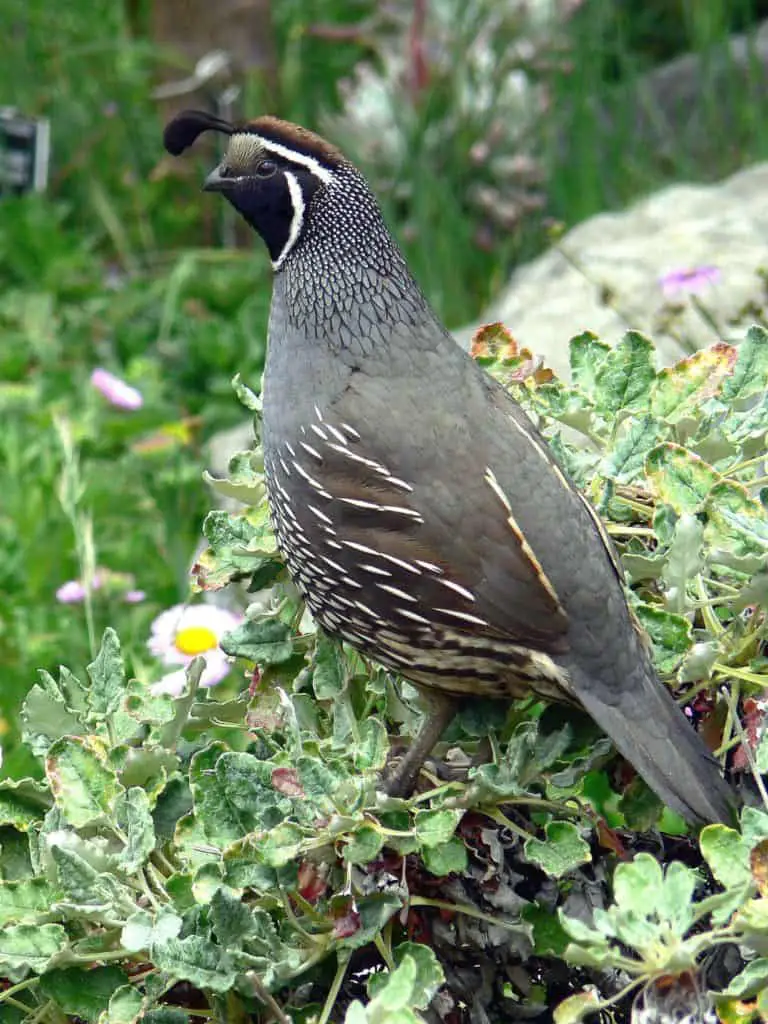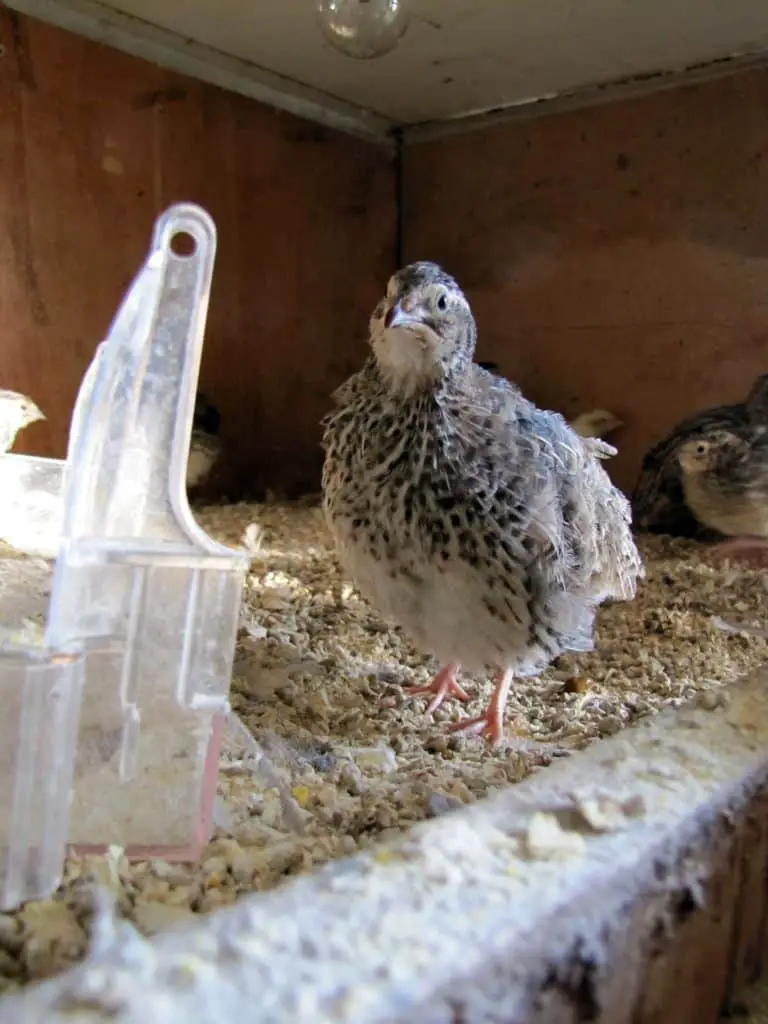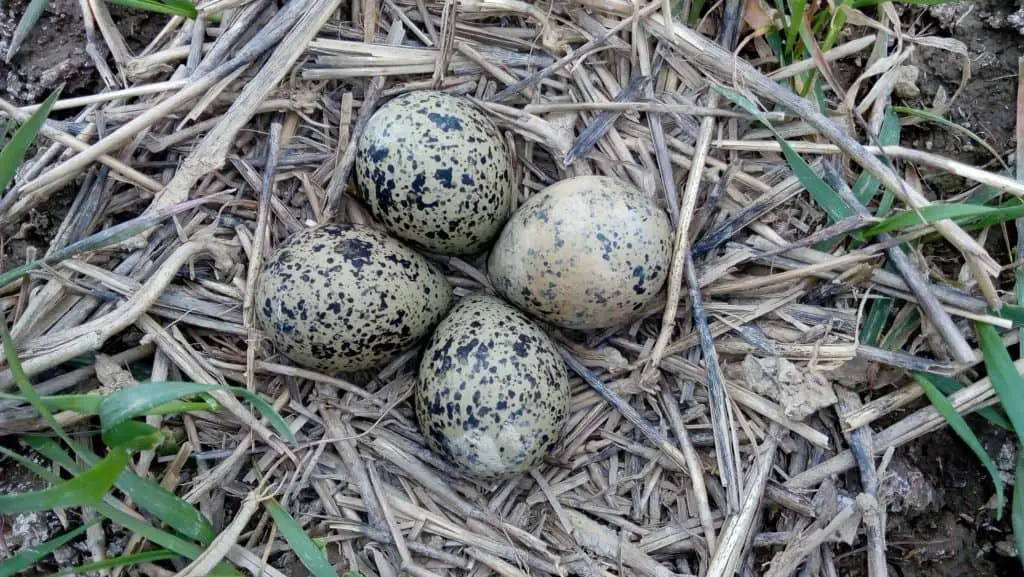In a nutshell, you can keep both quail and chickens in the same backyard, but you probably ought to keep them separated. On our own homestead, we allow our chickens to free range the entire property, but we keep our quail in a specified run for their own protection.
Quail are a fantastic addition to any homestead for numerous reasons, mainly because compared to chickens, they require much less space and less maintenance. Because of this, you may not be surprised to learn that the popularity of backyard quail raising has grown extensively worldwide over the past five years. It is estimated by the US Department of Agriculture that the number of backyard quail owners has increased by 40% in the past 7 years. The most popular breeds of quail in both the US and the UK are the King Quail (also known as Asian Blue Quail or Chinese painted quail), and the Japanese quail (or Coturnix Quail).

An additional reason raising quail may be a good alternative to traditional poultry for many homesteaders is because many residential or city ordinances restrict or outlaw raising chickens, but do not restrict raising quail.
Differences Between Quail and Chickens
First and foremost, both chickens and quail can be fantastic backyard pets. Though quail are more nervous than chickens by nature, and don’t like being handled like some other poultry breeds, they will warm up to you as their familiarity with you grows. Keep this in mind is you attempt to handle your quail, as they may attempt to get away from you by flying. Quail can fly vertical, and can injure themselves by flying into the netting or top of their enclosure.
As mentioned above, quail require smaller housing than chickens. Quail are much more like pheasants, and enjoy ground shelter, thus rather than roosting above ground at night, will seek cover under bushes or hides. Additionally, although quail prefer dark or discreet places to lay eggs, they won’t need a nesting box like chickens. Often, you will find your quail’s eggs hidden in their bedding.
Building a Quail Run

When it comes to building your quail a run to keep them separated from your chickens, keep in mind that you should allow six square feet per 6 quail. (Hint, that doesn’t mean 1 foot per square foot per bird, but instead, the smallest enclosure you should use for a quail is four to six square feet). Chickens, by comparison, require about 4 square feet per bird). When raising a small brood, (six quail or less) many people have used a rabbit hutch to convert into a quail run. Also like pheasants, quail are ground dwellers, and will not use a ramp to enter a coop or run like chickens will. Therefore, unless you utilize a hanging cage (discussed below) quail runs should be kept close to the ground. For this reason, one of the biggest predators for quail include rats, and house cats especially because many quail raisers are urban dwellers. If you use a ground-based quail run, you will want to place footers around the run (about 5-6 inches high) to keep rodents and other predators from reaching or grasping the quail.
Quail cages or runs can also be hung above ground. If you choose to go with this method of quail run, be sure to choose somewhere that has access to light, but is blocked from strong winds. Most quail cages are built of open mesh wire, since the birds need shelter, but plenty of air.
Often, quail breeders house their birds in outbuildings or garages. This is fine, just be sure that such rooms are well insulated, with good ventilation and free from drafts. Quail housing should be comfortable for your birds, with food and water readily accessible (though not too deep fro chicks) and allow for easy removal of droppings.
Additionally, though quail and chickens share some common predators, you will need to take extra precautions to secure your quail. Because rats (and other rodents) are capable of burrowing, if you use a ground-based run, you will want to build your quail run on a cement pad, or other firm and solid surface. Additionally, unlike chickens, quail can fly vertically, for this reason, you will need to ensure that your quail run is covered in order to contain them. Because quail startle easily, you can expect that your quail at some point will fly into or bump into the cover. To prevent injury therefore, you may want to use fruit netting or other soft material for the cover.
Chickens May Kill Quail
Though typically passive unless threatened, chickens are voracious eaters, including meat and other protein sources. Have you ever seen chickens attack a mouse? How about chickens attacking another, weaker, or injured chicken? The pecking order is real, and chickens, because of their size, will claim a higher place in the pecking order than quail if housed together. While I have never had a problem with my chickens attacking a quail, I would not allow them the opportunity to establish dominance via fighting and pecking.

Additionally, chickens are notorious carriers of illness and diseases, many of which they can be inoculated against, or develop resistance to; Quail however, have not been domesticated as long as chickens have been, and for that and other reasons, quail do not have strong immune systems to protect them from many of the common fowl illnesses that chickens may carry. (Hint: The Japanese quail is a recommended breed because they have stronger immune systems than many other quail breeds).
Dietary Needs
One other major difference between quail and chicken are their vastly different dietary needs. Quail and chickens have very different dietary requirements, and thus have different feed needs. Adult quail eat around 15 g. of food per day. Additionally, they require higher levels of protein (approximately 18-20%). Chickens on the other hand, require 14-16% protein when laying eggs.
Additionally, chickens will eat quail food, although it is not necessarily healthy for them. If kept in the same run, it is likely that the chickens would eat the quail food, and the quail may starve become undernourished, as quail do not typically like to eat chicken feed.
Because of their variation in diet, the nutritional value of quail eggs is also different than the nutritional value of chicken eggs. Quail eggs are much smaller than chicken eggs, but have nutritional and medicinal values that are not found in other fowl eggs. One serving of quail eggs actually has much more vitamin B2 and iron than a serving of chicken eggs. Quail eggs have a variety of vitamins and minerals including Vitamins A, B2, B5, B9, and B12, as well as thiamin and niacin, and minerals such as iron, Phosporus, Zinc, and Selenium, as well as small amounts of calcium, magnesium, potassium, copper and manganese in each serving. Quail eggs also contain healthy essential fatty acids, like omega-3 and omega-6. Each serving of quail eggs provides you with 13 percent of your DV for protein.

The shell of quail eggs is much thicker than regular chicken eggs, and may require the use of a quail eggshell cutter. Four quail eggs are roughly the same as a chicken egg, although they have a slightly higher quantity of yolk to white in an egg. Quail start laying eggs in 6-8 weeks, whereas chickens won’t start laying for typically five or six months. Additionally, given the proper conditions, quail can lay up to 300 eggs per year. As a side note, another reason to avoid combining quail with chickens is the simple reason that chickens will eat quail eggs.
Common Quail Breeds
There are six native species of quail found in North America.
- The Bobwhite Quail is the most common species of quail and is knows as the most common game bird in the Eastern and Southern United States. It is easily identifiable by its whistling call, and male plumage of white throat and brow stripes.
- The California Quail is very popular on the Western United States, most easily identified by their sweeping, comma-shaped, forward facing crest plume (of six crest feathers), fine black and white markings on the neck. The Mountain Quail is the largest quail species in the US, and have two unique straight feathers that arch above their back.
- The Gambel’s Quail, or desert quail are located in drier regions of the United States and are comonly confused with California Quail due to their markings. They are most easily identified by their gray plumage, and unique head top knot with copper cover (in males), and scaly plumage on their undersides.
- Scaled Quail, or blue quail, also known as the “cotton-top” quail, have distinctive scaly markings on their breast and back feathers and white crest plumage that looks like a tuft of cotton.
- The Mearns Quail, or Montezuma Quail is a smaller bird, with a shorter tail than other breeds, not as prevalent as other breeds, found in south Texas, New Mexico, Arizona, and southern Utah in areas with juniper and oak trees. Males of this breed have a distinctive swirling black and white face patters, with blue gray sides and bold spots.

